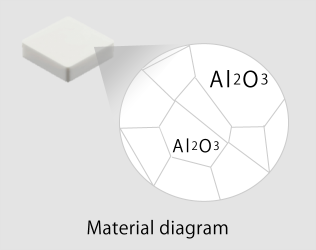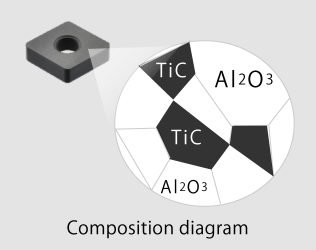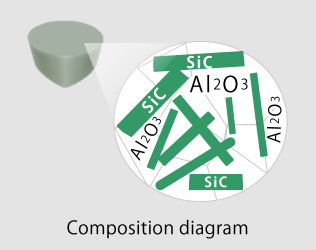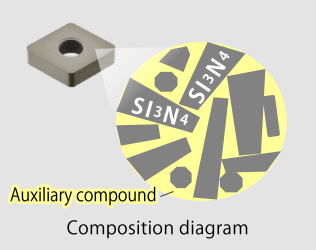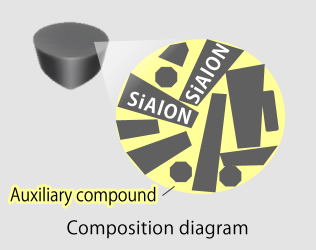When you hear the word “ceramic”, the first thing people may think of is the “white” material used for plates and sanitary ware (toilets).
But that type of ceramic is just one of a number of ceramics. There are as many as five ceramics used for cutting tools.
In this article, we will introduce the 5 types of ceramic used in cutting tools.
What is ceramic in the first place?
In a broad sense, ceramics are a blend of metal or nonmetal with oxygen (O), nitrogen (N), carbon (C), etc., and this baked material is used as a cutting tool.
The ceramic used in cutting tools is roughly available in two types of “Alumina ceramic” (Al2O3) and “silicon nitride (Si3N4) ceramic” made by blending various additives with the main ingredients to develop specific characteristics.
It is further subdivided by the addition of various additives to the main ingredients.
Al2O3 : Alumina-based ceramics
1. White Ceramic
Alumina (Al2O3) is the main component of ceramic, and is called white ceramic because of its color. In fact, the same ingredients are in jems like rubies and sapphires (Al2O3)
The main diff erence is that ruby and sapphire aresingle crystals (particles of one large mass), whilealumina is polycrystalline (a collection of multipleparticles). Alumina is hard and chemically stable.Taking advantage of its properties, it is used in high-speed fi nishing of cast iron.
2. Black ceramic
Titanium carbide (TiC) is added to alumina, and this is called black ceramic because of its color.
The addition of titanium carbide results in higher hardness, than white ceramic, and suppresses deformation of the cutting edge due to heat; even at high temperatures.
Taking advantage of its properties, it is used in high-speed finishing of hardened materials up to about HRC65.
3. Whisker
It is a ceramic in which silicon carbide (SiC) is added to alumina. Do you know why it’s called whisker ?
If you look up the English-Japanese dictionary, it says “animal beard”. In fact, silicon carbide has a needle-like shape similar to a “animal beard”, so it is now called whisker (ceramic).
By intertwining silicon carbide with each other, the progression of cracks due to impacts during cutting is suppressed, and cracks are prevented. In addition, it has a resistance against sudden temperature changes. Taking advantage of these properties, it is widely used for heat-resistant alloy processing.
Silicon nitride, Si3N4
1. Silicon Nitride
Silicon nitride (Si3N4) is the main component, and a special feature is that the particles are needle-like, different from the alumina compound.
By intertwining needle-like particles, the progression of cracks due to impact during cutting can be greatly suppressed, preventing cracks.
Taking advantage of these properties, it is used in high-speed roughing of cast iron.
2. Sialon
Silicon nitride (Si3N4), Aluminum (Al), and oxygen (O)are blended to form SiAlON, which is an initial of its component elements.
Sialons, like silicon nitride, have needle-like particles. Needle-like particles intertwine to withstand impact during cutting.
In addition, the effect of the added alumina component improves heat resistance over silicon nitride, and has excellent high temperature resistance characteristics.
Taking advantage of these properties, it is used in high-speed processing of heat-resistant alloys.
I hope this column gave you a better understanding of the types, differences, and features of ceramic materials.
Ceramic cutting tools must be used according to the material to be machined, but they can be processed up to 20 times faster than carbide tools. Increase productivity with ceramic cutting tools for your material applications.


